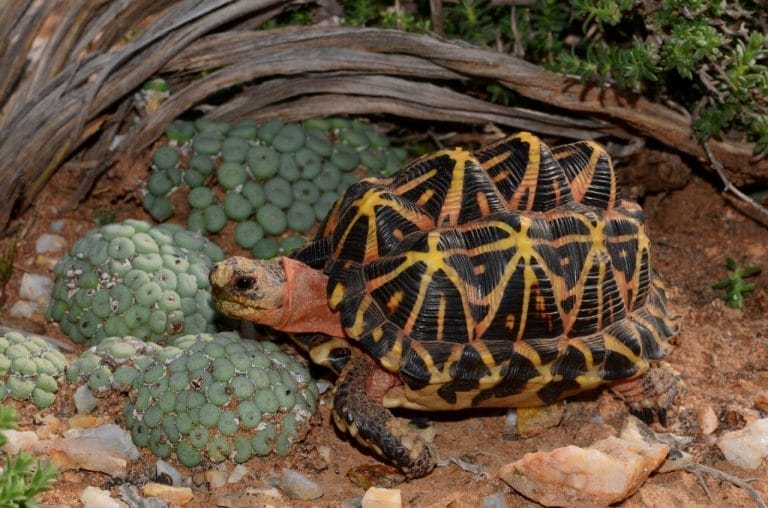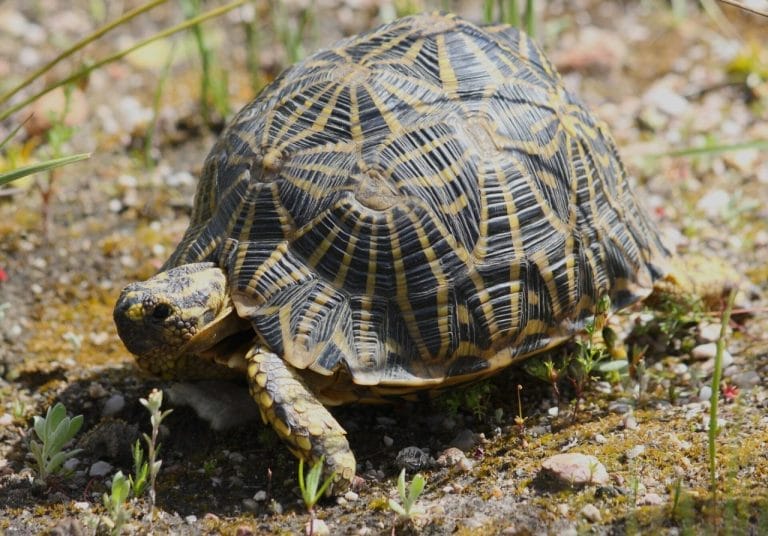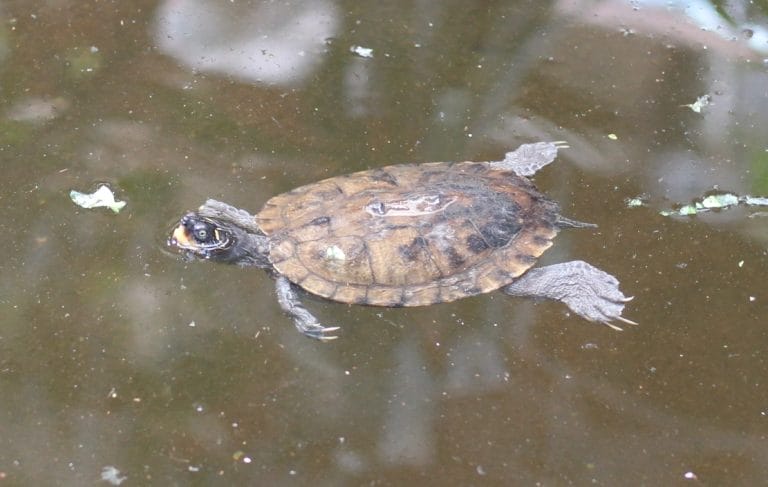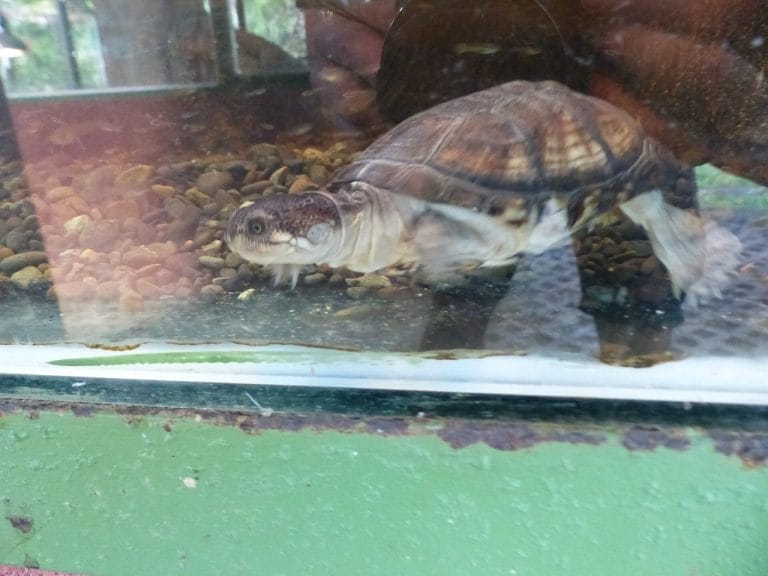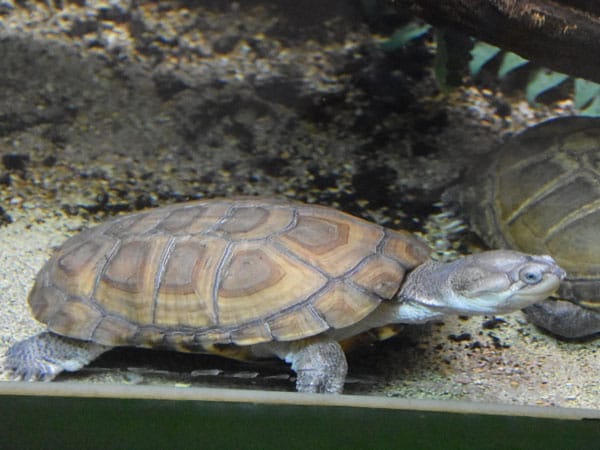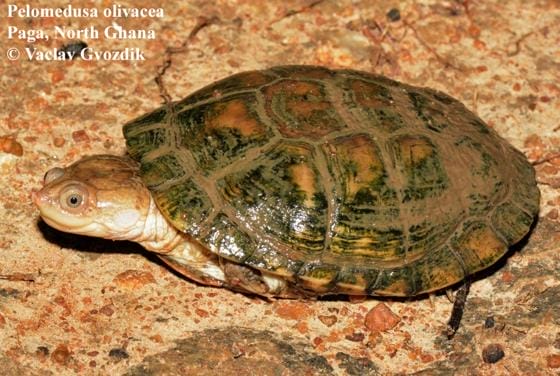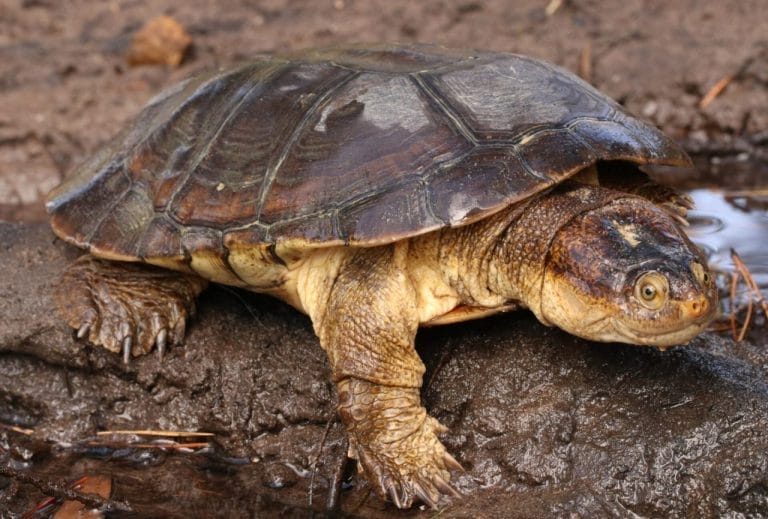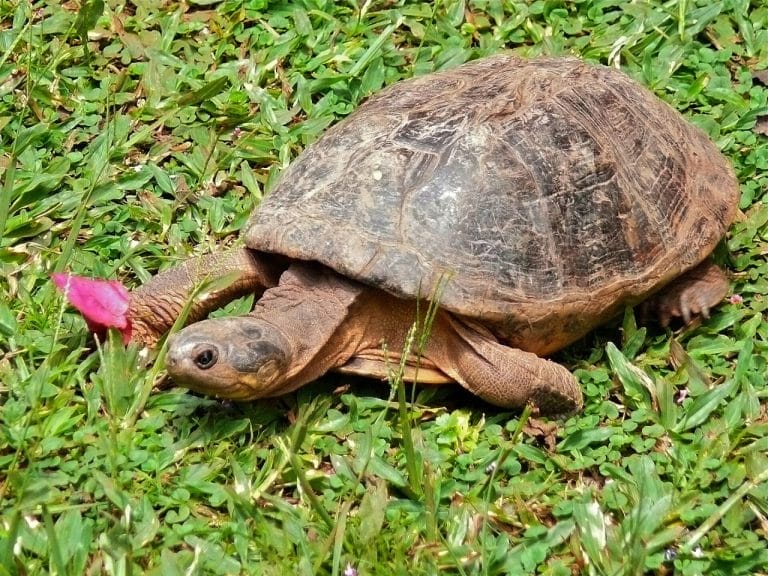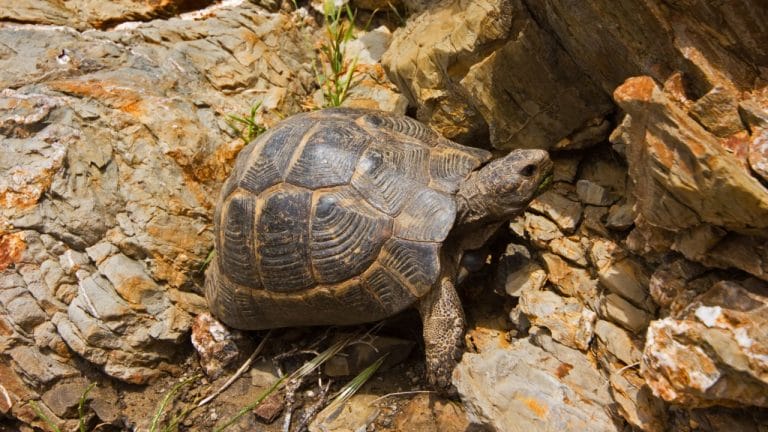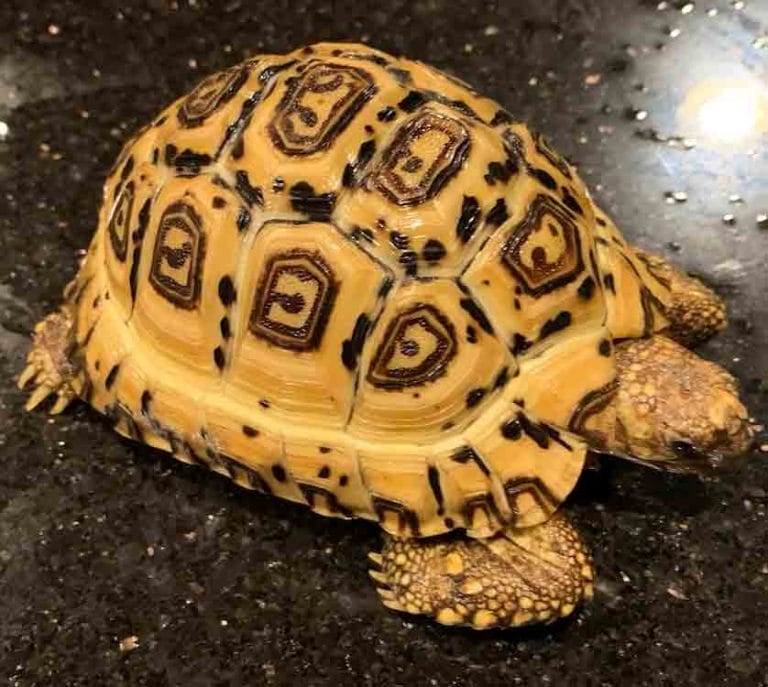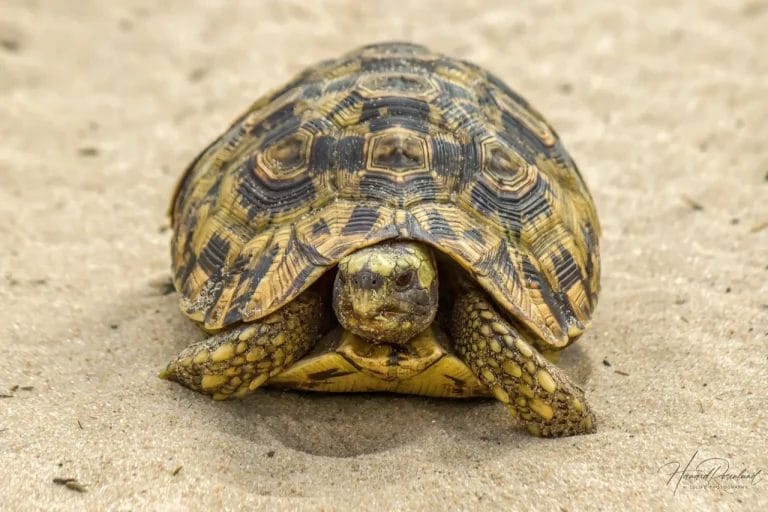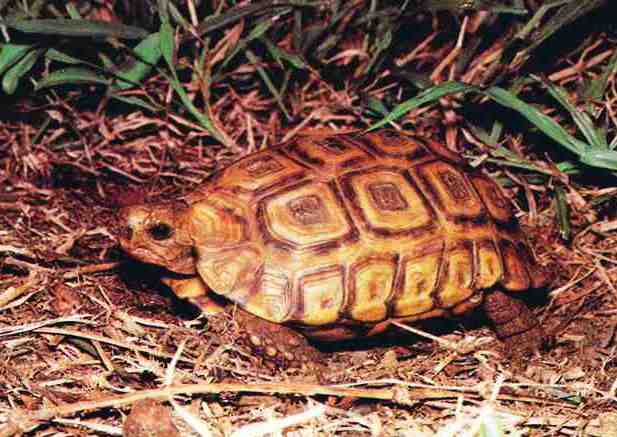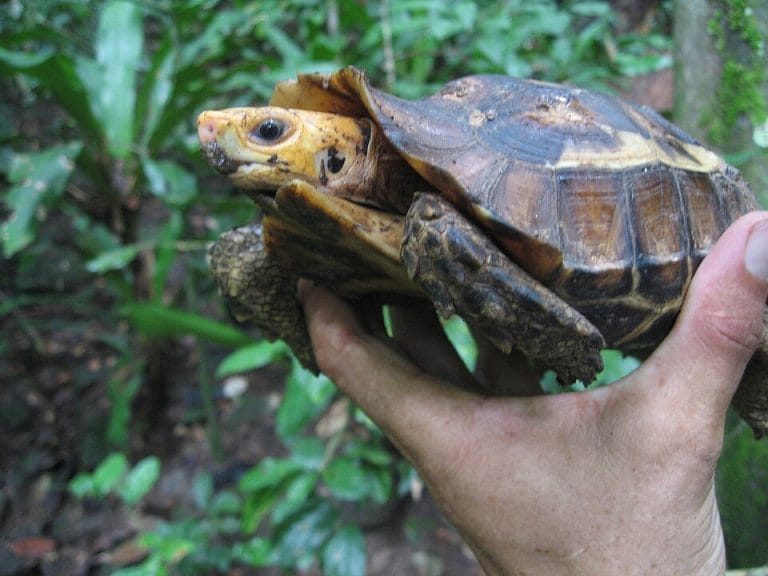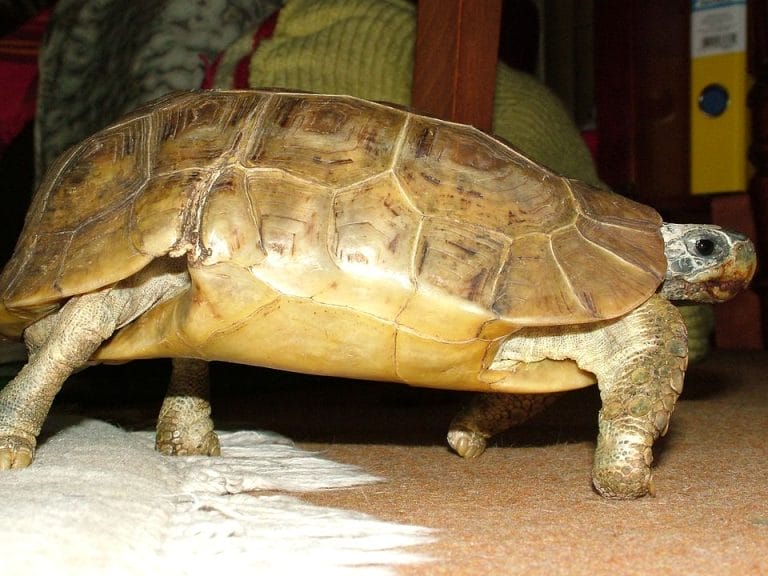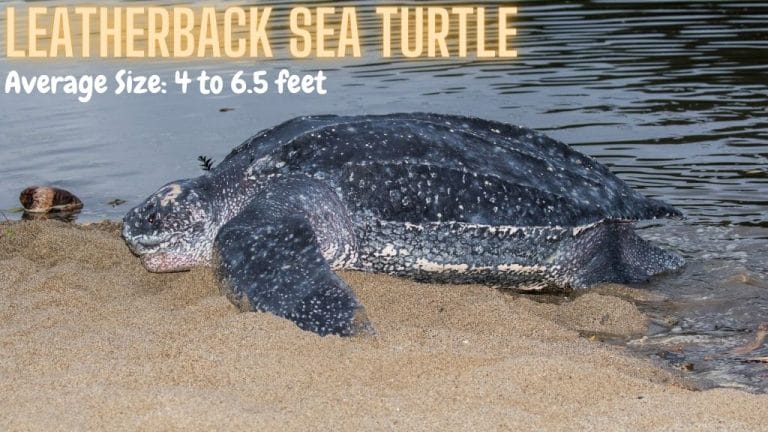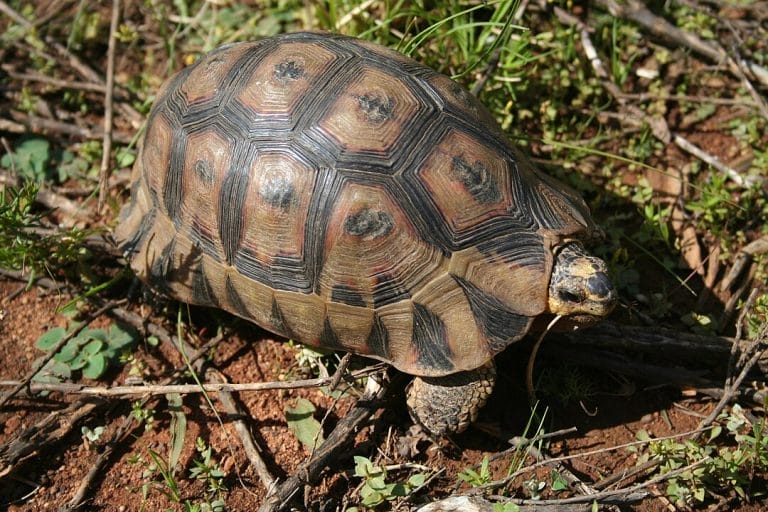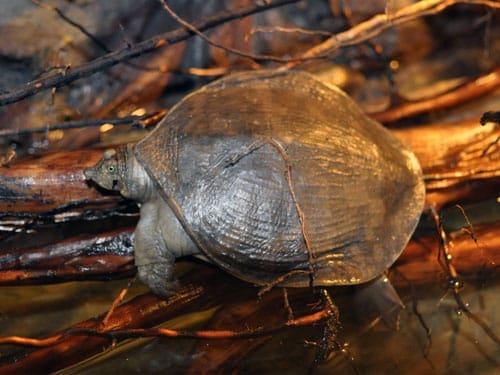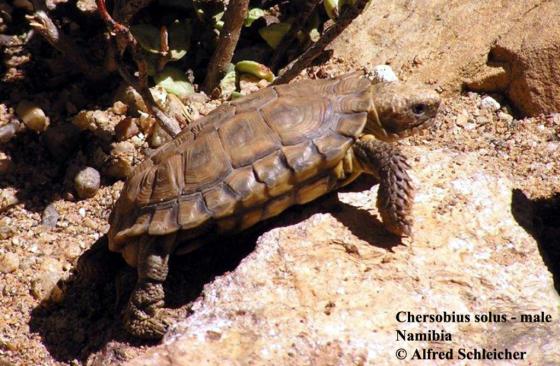Native Turtles Of Africa
Africa is full of tough, slow-moving tortoises and hidden freshwater turtles. From deserts to savannas, these reptiles have adapted to some wild conditions. Here’s a guide to the native turtle and tortoise species found across the African continent.
Native Turtles Of Africa
-
Psammobates tentorius (Tent Tortoise)
Psammobates tentorius, known as the tent tortoise, is a small, shy tortoise native to southern Africa. Its name comes from the tent-like shape of its high-domed shell, marked with beautiful star patterns. Scientific Classification Kingdom: AnimaliaPhylum: ChordataClass: ReptiliaOrder: TestudinesFamily: TestudinidaeGenus: PsammobatesSpecies: Psammobates tentorius Common Names Tent tortoiseStar tortoise of South Africa Identification DescriptionTent tortoises have…
-
Psammobates oculifer (Serrated Tortoise)
Psammobates oculifer, also known as the serrated tortoise, is a small, dryland tortoise found in southern Africa. It’s recognized for its unique shell edge, which looks jagged or saw-like. This species is shy, slow-moving, and highly adapted to arid environments. Scientific Classification Kingdom: AnimaliaPhylum: ChordataClass: ReptiliaOrder: TestudinesFamily: TestudinidaeGenus: PsammobatesSpecies: Psammobates oculifer Common Names Serrated TortoiseSerrated…
-
Psammobates geometricus (Geometric Tortoise)
Psammobates geometricus, also known as the geometric tortoise, is one of the most visually striking tortoise species on earth. It’s critically endangered and found only in a small part of South Africa. Scientific Classification Kingdom: AnimaliaPhylum: ChordataClass: ReptiliaOrder: TestudinesFamily: TestudinidaeGenus: PsammobatesSpecies: Psammobates geometricus Common Names Geometric TortoiseGeometric Padloper Identification DescriptionThis tortoise has a small, domed…
-
Pelusios subniger (East African black mud turtle)
Pelusios subniger, known as the East African black mud turtle, is a freshwater turtle commonly found in parts of eastern and southern Africa. It’s known for its dark shell and ability to live in a range of aquatic habitats, including seasonal water bodies. Scientific Classification Kingdom: AnimaliaPhylum: ChordataClass: ReptiliaOrder: TestudinesFamily: PelomedusidaeGenus: PelusiosSpecies: P. subniger Common…
-
Pelusios sinuatus (Serrated hinged terrapin)
The Pelusios sinuatus, also called the serrated hinged terrapin, is a freshwater turtle found mostly in southern Africa. It gets its name from the serrated edge at the back of its shell and its special hinged plastron that helps it close its shell tightly for protection. Scientific Classification Kingdom: AnimaliaPhylum: ChordataClass: ReptiliaOrder: TestudinesFamily: PelomedusidaeGenus: PelusiosSpecies:…
-
Pelusios gabonensis (African Forest Turtle)
Pelusios gabonensis is a semi-aquatic turtle found mostly in the tropical forests and swamps of central and western Africa. It is known for its hinged plastron, allowing it to close its shell tightly when threatened. Scientific Classification Kingdom: AnimaliaPhylum: ChordataClass: ReptiliaOrder: TestudinesFamily: PelomedusidaeGenus: PelusiosSpecies: Pelusios gabonensis Common Names African Forest TurtleGabon Mud Turtle Identification DescriptionThis…
-
Pelusios chapini (Central African Mud Turtle)
Pelusios chapini, also known as the Central African Mud Turtle, is a freshwater turtle found mainly in Central Africa. It’s a shy, semi-aquatic species that prefers slow-moving or still waters and is often overlooked due to its quiet lifestyle. Scientific Classification Kingdom: AnimaliaPhylum: ChordataClass: ReptiliaOrder: TestudinesFamily: PelomedusidaeGenus: PelusiosSpecies: Pelusios chapini Common Names Central African Mud…
-
Pelusios castanoides (Yellowbelly mud turtle)
Pelusios castanoides, known as the yellowbelly mud turtle, is a small freshwater turtle native to parts of Africa. Its name comes from its distinct yellow plastron, which contrasts with its darker carapace. These turtles are shy, semi-aquatic, and spend much of their time hidden in muddy waters. Scientific Classification Common Names Identification DescriptionThis turtle has…
-
Pelusios castaneus (West African Mud Turtle)
The West African mud turtle, Pelusios castaneus, is a hardy freshwater species known for its adaptability and wide range. It’s a common turtle in parts of West Africa and is often seen in local water bodies, from ponds to slow-moving rivers. Scientific Classification Kingdom: AnimaliaPhylum: ChordataClass: ReptiliaOrder: TestudinesFamily: PelomedusidaeGenus: PelusiosSpecies: Pelusios castaneus Common Names Identification…
-
Pelomedusa variabilis (Variable Helmeted Turtle)
Pelomedusa variabilis is a freshwater turtle known for its subtle differences in shell shape and color across different regions. It’s a recently recognized species that was once grouped with the more widespread Pelomedusa subrufa. Scientific Classification Kingdom: AnimaliaPhylum: ChordataClass: ReptiliaOrder: TestudinesFamily: PelomedusidaeGenus: PelomedusaSpecies: Pelomedusa variabilis Common Names Variable Helmeted TurtleAfrican Variable Mud Turtle Identification DescriptionPelomedusa…
-
Pelomedusa subrufa (East African Helmeted Turtle)
Pelomedusa subrufa is a small, semi-aquatic turtle found widely across Africa. It’s known for its helmet-shaped head and ability to survive in both water and dry conditions. This turtle is hardy, adaptable, and often seen in temporary ponds or roadside ditches. Scientific Classification Kingdom: AnimaliaPhylum: ChordataClass: ReptiliaOrder: TestudinesFamily: PelomedusidaeGenus: PelomedusaSpecies: Pelomedusa subrufa Common Names Identification…
-
Pelomedusa schweinfurthi (Schweinfurth’s Helmeted Turtle)
Pelomedusa schweinfurthi, or Schweinfurth’s Helmeted Turtle, is a lesser-known freshwater turtle found in parts of central and eastern Africa. It belongs to a group of turtles known for their unique way of hiding their heads sideways into their shells instead of pulling them straight back. Scientific Classification Kingdom: AnimaliaPhylum: ChordataClass: ReptiliaOrder: TestudinesFamily: PelomedusidaeGenus: PelomedusaSpecies: Pelomedusa…
-
Pelomedusa olivacea (Schweigger’s African Helmeted Turtle)
Pelomedusa olivacea, also known as Schweigger’s African Helmeted Turtle, is a freshwater turtle found across parts of West and Central Africa. It’s part of the Pelomedusidae family and is known for its hinged plastron and helmet-like head. Scientific Classification Kingdom: AnimaliaPhylum: ChordataClass: ReptiliaOrder: TestudinesFamily: PelomedusidaeGenus: PelomedusaSpecies: Pelomedusa olivacea Common Names Schweigger’s African Helmeted TurtleWest African…
-
Pelomedusa kobe (Kobe Helmeted Turtle)
The Kobe Helmeted Turtle (Pelomedusa kobe) is a freshwater turtle species known for its distinctive domed shell and preference for still or slow-moving waters. It is part of the Pelomedusidae family, which includes other African side-necked turtles. Scientific Classification Kingdom: AnimaliaPhylum: ChordataClass: ReptiliaOrder: TestudinesFamily: PelomedusidaeGenus: PelomedusaSpecies: Pelomedusa kobe Common Names Kobe Helmeted TurtleKobe Side-necked Turtle…
-
Pelomedusa gehafie (Eritrean helmeted turtle)
Pelomedusa gehafie, known as the Eritrean helmeted turtle, is a freshwater turtle native to the Horn of Africa. It stands out from its close relatives with subtle physical differences and occupies a unique ecological niche in its native range. Scientific Classification Kingdom: AnimaliaPhylum: ChordataClass: ReptiliaOrder: TestudinesFamily: PelomedusidaeGenus: PelomedusaSpecies: Pelomedusa gehafie Common Names Eritrean helmeted turtle…
-
Pelomedusa galeata (South African helmeted terrapin)
The South African helmeted terrapin, Pelomedusa galeata, is a freshwater turtle found in southern Africa. Known for its domed shell and ability to thrive in temporary water bodies, it’s a resilient species adapted to challenging environments. Scientific Classification Kingdom: AnimaliaPhylum: ChordataClass: ReptiliaOrder: TestudinesFamily: PelomedusidaeGenus: PelomedusaSpecies: Pelomedusa galeata Common Names South African helmeted terrapinGaleata terrapin Identification…
-
Pelomedusa barbata (African Helmeted Turtle)
Pelomedusa barbata, known as the African Helmeted Turtle, is a freshwater turtle famous for its hinged plastron and tough, dome-shaped shell. It’s a hardy species, well-adapted to survive harsh conditions like droughts. Scientific Classification Common Names African Helmeted TurtleBarbata Helmeted Turtle Identification DescriptionThis turtle has a broad, oval-shaped shell, often dark brown or olive in…
-
Trionyx triunguis (African Softshell Turtle)
The African Softshell Turtle (Trionyx triunguis) is a large, freshwater turtle known for its flat, leathery shell and long neck. It is one of the few softshell turtles native to both Africa and the Middle East, often found in rivers, lakes, and even brackish waters. Scientific Classification Kingdom: AnimaliaPhylum: ChordataClass: ReptiliaOrder: TestudinesFamily: TrionychidaeGenus: TrionyxSpecies: Trionyx…
-
Testudo graeca (Greek Tortoise)
The Greek Tortoise (Testudo graeca) is a small to medium-sized tortoise native to parts of Europe, North Africa, and the Middle East. Known for its domed shell and long lifespan, this species thrives in dry, rocky habitats and has been kept as a pet for centuries. Scientific Classification Kingdom: AnimaliaPhylum: ChordataClass: ReptiliaOrder: TestudinesFamily: TestudinidaeGenus: TestudoSpecies:…
-
Stigmochelys pardalis (Leopard Tortoise)
Stigmochelys pardalis, known as the leopard tortoise, is a large, slow-moving tortoise species found in the grasslands and savannas of eastern and southern Africa. Its name comes from the bold, black and yellow pattern on its shell, which resembles the spots of a leopard. Scientific Classification Kingdom: AnimaliaPhylum: ChordataClass: ReptiliaOrder: TestudinesFamily: TestudinidaeGenus: StigmochelysSpecies: Stigmochelys pardalis…
-
Kinixys zombensis (Eastern Hinged-Back Tortoise)
The Eastern Hinged-Back Tortoise (Kinixys zombensis) is a medium-sized tortoise native to parts of Eastern and Southern Africa. Known for its unique hinged shell that allows it to protect its hind limbs and tail, this species exhibits fascinating adaptations to its environment. Scientific Classification Common Names Identification Description The Eastern Hinged-Back Tortoise typically reaches a…
-
Kinixys spekii (Speke’s Hinge-back Tortoise)
Kinixys spekii, commonly known as Speke’s hinge-back tortoise, is a unique species native to parts of Eastern and Southern Africa. Distinguished by its hinged shell, this tortoise can protect itself by closing the rear portion of its carapace—a feature that sets it apart from many other tortoise species. Its adaptability and intriguing behaviors make it…
-
Kinixys nogueyi (Western Hinge-back Tortoise)
The Western Hinge-back Tortoise, scientifically known as Kinixys nogueyi, is a species of tortoise found primarily in West Africa. This tortoise is notable for its unique hinged shell, which allows it to close tightly against predators, providing a significant survival advantage in its natural habitat. Scientific Classification Common Names Identification Native Origin and Distribution Preferred Habitat Kinixys…
-
Kinixys natalensis (Natal Hinge-back Tortoise)
The Natal Hinge-back Tortoise (Kinixys natalensis) is a small to medium-sized tortoise species native to southern Africa. Recognized for the unique hinged section at the rear of its carapace, this tortoise can protect itself by closing its shell when threatened, a distinctive feature among tortoises. Scientific Classification Common Names Identification Description The Natal Hinge-back Tortoise…
-
Kinixys lobatsiana (Lobatse Hinge-back Tortoise)
Kinixys lobatsiana, commonly known as the Lobatse hinge-back tortoise, is a medium-sized tortoise native to southern Africa. Notable for its unique hinged shell, this species can protect itself by closing the rear part of its carapace, a feature that distinguishes it from other tortoises. Scientific Classification Common Names Identification Description The Lobatse hinge-back tortoise has…
-
Kinixys homeana (Home’s Hinge-back Tortoise)
Kinixys homeana, commonly known as Home’s Hinge-back Tortoise, is a species of tortoise native to the forests of West and Central Africa. Notable for its unique hinged shell, this tortoise can partially close its carapace to protect itself from predators. Its adaptability to dense, humid environments makes it a fascinating subject for herpetologists and conservationists…
-
Kinixys erosa (forest hinge-back tortoise)
The forest hinge-back tortoise (Kinixys erosa) is a unique species native to the dense rainforests of central and western Africa. Known for the distinctive hinged section at the rear of its shell, this tortoise can protect its hind limbs and tail by closing the hinge, a feature uncommon among tortoises. Scientific Classification Common Names Identification…
-
Kinixys belliana (Bell’s Hinge-back Tortoise)
Kinixys belliana, commonly known as Bell’s Hinge-back Tortoise, is a unique species native to sub-Saharan Africa. Distinguished by a hinged section at the rear of its carapace, this tortoise can close its shell to protect itself from predators, a feature not common in most tortoise species. Scientific Classification Common Names Identification Description Bell’s Hinge-back Tortoise…
-
Homopus femoralis (Greater Padloper)
Homopus femoralis, commonly known as the Greater Padloper or Karoo Dwarf Tortoise, is one of the smallest tortoise species in the world. Endemic to South Africa, this petite reptile is adapted to the arid environments of the Karoo region, showcasing unique characteristics that have piqued the interest of herpetologists and conservationists alike. Scientific Classification Common…
-
Homopus areolatus (Parrot-beaked Tortoise)
Homopus areolatus, commonly known as the Parrot-beaked Tortoise or Common Padloper, is one of the smallest tortoise species in the world. Endemic to South Africa, this diminutive reptile is renowned for its distinctive beak-like mouth and high-domed shell, which help it thrive in its rocky, arid habitat. Scientific Classification Common Names Identification Description Homopus areolatus…
-
Dermochelys coriacea (Leatherback Sea Turtle)
Dermochelys coriacea, commonly known as the leatherback sea turtle, is the largest and most unique of all sea turtles. Unlike other species, it has a soft, leathery shell rather than a hard one and can travel incredible distances across the oceans. Scientific Classification Common Names Identification Native Origin and Distribution Preferred Habitat Leatherbacks are pelagic,…
-
Cycloderma aubryi (Aubry’s flapshell turtle)
Cycloderma aubryi, also known as Aubry’s flapshell turtle, is a freshwater species native to Central and West Africa. This turtle is known for its flattened, leathery carapace and its ability to adapt to various aquatic environments. Scientific Classification Common Names Identification Description Aubry’s softshell turtle has a distinct flat, oval-shaped, leathery carapace, which is typically…
-
Chersina angulata (Angulate tortoise)
Chersina angulata, commonly known as the Angulate Tortoise, is a small species of tortoise native to South Africa. Recognized by its distinctive yellow-edged shell and high-domed carapace, this species thrives in arid and semi-arid regions. It is known for its territorial behaviors, especially among males. Scientific Classification Common Names Identification DescriptionThe Angulate Tortoise has a…
-
Cyclanorbis senegalensis (Senegal Flapshell Turtle)
Cyclanorbis senegalensis is a species of softshell turtle native to Africa, particularly known for its unique flattened shell and aquatic lifestyle. This turtle plays a significant role in its ecosystem as both a predator and prey, contributing to the balance of its habitat. Scientific Classification Common Names Identification Native Origin and Distribution Preferred Habitat Cyclanorbis…
-
Cyclanorbis elegans (Nubian Flapshell Turtle)
Cyclanorbis elegans, commonly known as the Nubian Flapshell Turtle, is a unique species of softshell turtle native to Africa. This species is known for its elegant, flattened carapace and distinctive behavior, making it a fascinating subject of study for herpetologists and turtle enthusiasts alike. Scientific Classification Common Names Identification Description:Cyclanorbis elegans has a flattened, soft…
-
Chersobius solus (Nama Padloper)
Chersobius solus, known for its small size and distinctive appearance, is a unique species of tortoise native to South Africa. This tortoise is renowned for its rarity and specific habitat preferences, making it a subject of interest in conservation circles. Scientific Classification Common Names Identification Native Origin and Distribution Preferred Habitat Chersobius solus thrives in…
-
Chersobius signatus (Speckled tortoise)
Chersobius signatus, commonly known as the speckled padloper tortoise, is one of the smallest tortoises in the world. It is renowned for its diminutive size and unique, speckled shell pattern that aids in camouflage within its native habitat. Scientific Classification Common Names Identification Native Origin and Distribution Preferred Habitat The speckled padloper tortoise prefers rocky…
-
Caretta caretta (Loggerhead sea turtle)
The Caretta caretta, commonly known as the loggerhead sea turtle, is a marine species notable for its large head and robust body. As one of the ocean’s most migratory creatures, these turtles play a crucial role in marine ecosystems, primarily through their influence on other species and their habitats. Scientific Classification Common Names Identification Native…
Warning: You Might Spend Hours Here
I’ve built the ultimate turtle and tortoise species database. This isn’t your average turtle list. Filter by genus, conservation status, and more. How many species? Which are endangered? What’s the tiniest one? It’s all there.

